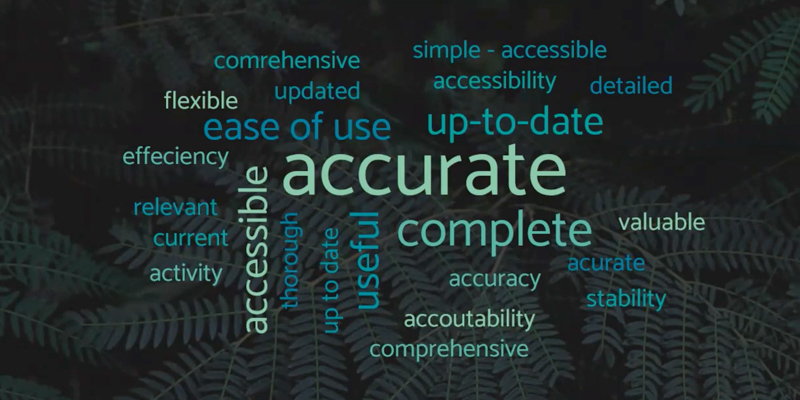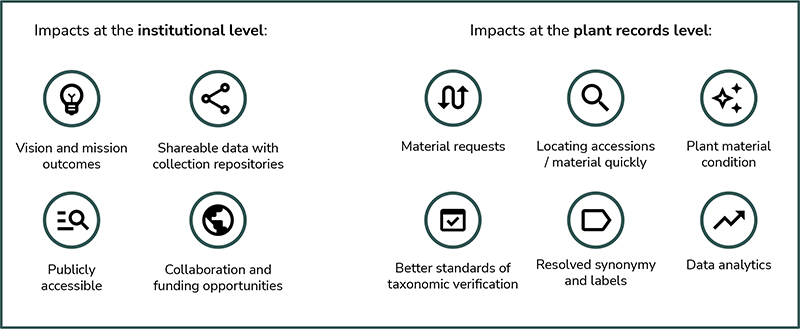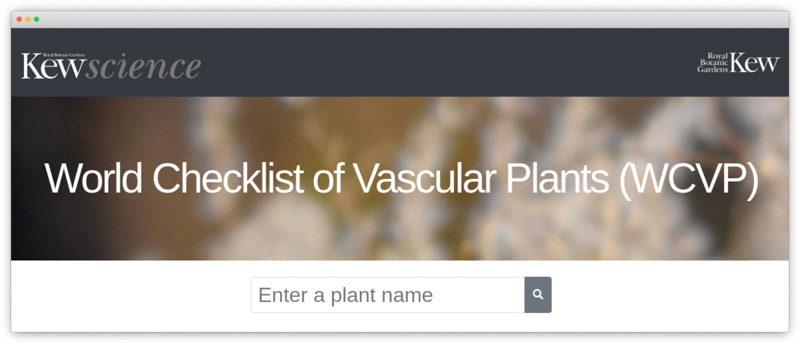A healthy plant records database is vital for the effective management of a plant collection. With a neglected database, there are increased chances of running into a series of problems and underutilisation of your collection. Furthermore, if you are not able to rely on your data, the value of investing time in keeping records in the first place, is put into question.
Botanic gardens are institutions holding documented collections of living plants for the purpose of scientific research, conservation, display and education.
BOTANIC GARDENS CONSERVATION INTERNATIONAL
Many institutions have different perceptions of what is considered healthy plant records, but there are standards that gardens could aim towards. In our last webinar, we explored this topic and how it can help gardens become more strategic in relation to data quality, and how this will offer opportunities to become a more data-driven institution.
However, as the backbone of a garden’s plant collection, what does a healthy plant records system mean? And how can it be achievable for your garden?
What constitutes a healthy plant record?

The basics of a healthy plant record can be boiled down to these five key elements. If you can fulfil these requirements, you are well on your way.
- Accurate: Is the information correct in every detail?
- Completeness: How comprehensive is the information?
- Reliability: Does the information contradict other trusted resources?
- Relevance: Do you really need this information, based on your garden’s mission?
- Timeliness: How up-to-date is information?
However, when moving into a more comprehensive dataset, there are additional opportunities to take your plant records even further.
These can be summarised by the following concepts:
- Interoperable: Can the data be used and understood by other systems?
- Longitudinality: Do you have “healthy” data existing over a length of time?
- Standardized: Are you complying with industry standards?

Ensuring data quality
An example of one of the issues many institutions face is in finding up-to-date taxonomic information. For scientific names, The World Checklist of Vascular Plants (WCVP) is an excellent example resource. This comprehensive list is derived from peer-reviewed literature, scientific databases, herbaria and observations. It is also reviewed by experts.
Using tools like these can help determine whether you are using a synonym or an accepted species name for your plant record. That the WCVP is continuously updated and freely-available online, means it can be incorporated as part of periodic reviews of your plant records.

Innovations in data management
Comparing the plant records situation over the past decades, there are still many opportunities to enhance the way in which data is managed. Technology can play a major part in this evolution, especially in the prevention of “stale data”. For example, reminders about plant records that may not have been updated in a while could alleviate this issue.
As in many industries, there has been a digital transformation to meet changing business and market requirements. A global pandemic has accelerated this need. In agriculture, for example, data platforms on the cloud are already helping automate crop management and practical work through decision-making tools.
The “digital reimagining” for plant records translates to knowing your collection really well, relying on the data contained within it, and ultimately maximising its usefulness.
Plant records quality over quantity
The potential of plant records data is growing. Taking full advantage with interoperable, longitudinal, and standardized records means institutions will be better able to incorporate analytics into their strategic vision and collaborate with others with more precision and ease.
Data-driven decision-making can be transformational. When gardens can realise the full value of their plant records data, they are empowered to make better day-to-day decisions. Once insights are discovered, they can be communicated at appropriate levels. Only through having healthy plant records is this going to be most fruitful.

The technologies available to us today make the prospect of a healthy plant records system achievable for everyone, no matter your mission. We will do what we can to help you on that journey.
We will continue our research and innovation in this field together with the community, and we can expect to see some of these ideas put to good use in Hortis.
Join us at our next webinar on 2nd December 2021
Do you have a plant records topic you would like us to cover? Feel free to get in touch with ideas for our final webinar of 2021.
For more details on how to sign up, visit: https://botanicalsoftware.com/events/event/plant-records-webinar/
To view other webinars from our Plant Records series, go to the Botanical Software Youtube Channel.

